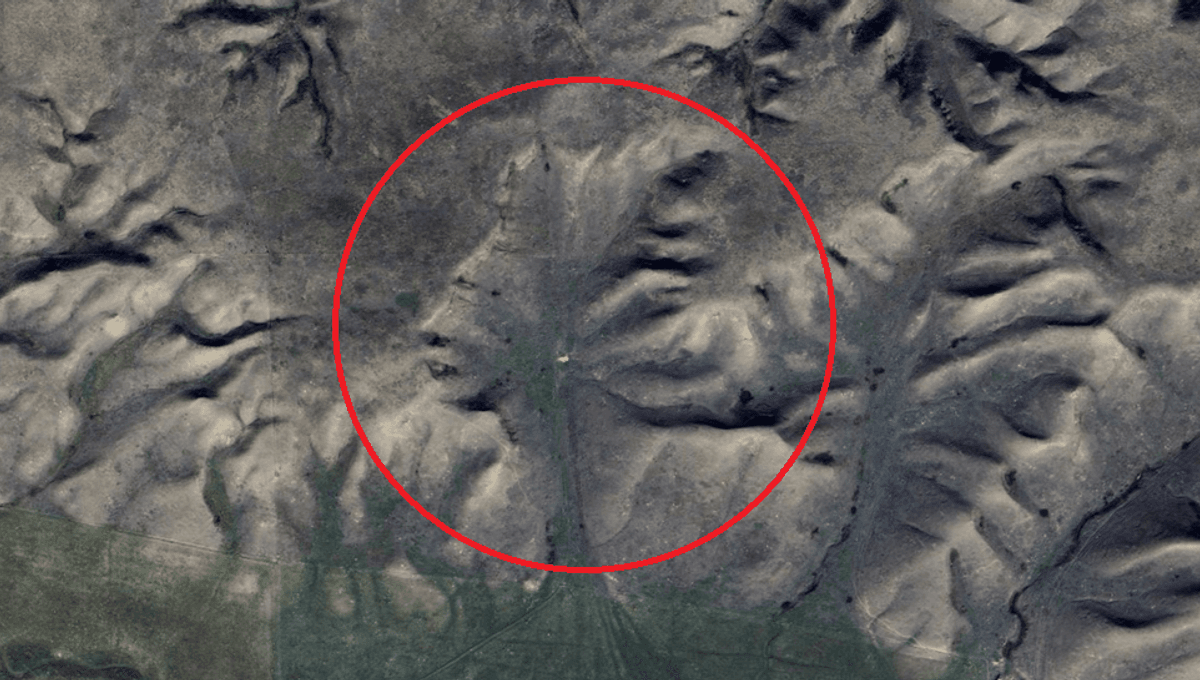Satellite Image Shows A Human Head Peering Out Of The Landscape In Canada

What's Up With This Mysterious Human Head Peering Out Of The Landscape In Canada?
When satellite images revealed what a part of Canada looked like from the skies, people noticed a striking rock formation resembling a human face in side profile. Remarkably, it's possible to clearly make out distinct features, including an eye, nose, mouth, chin, neck, cheekbones, the jawline, and even what appears to be a feathered headdress on their head.
Known as the Badlands Guardian, it was first identified in November 2006 by Lynn Hickox, who spotted it near the town of Medicine Hat in southeast Alberta while using Google Earth to get directions to a dinosaur museum in the area. It was previously captured through aerial imaging by the Alberta Department of Lands & Forests while mapping the region between 1949 and 1951, but it appears that no one took notice of the facial feature (or at least did not document it). When viewed from ground level, it's relatively unremarkable and appears almost indistinguishable from its surrounding terrain. Some keen-eyed observers have since pointed out that, in some versions of the image, it appears the humanoid face looks as if it is wearing earphones, created by the impression of an oil well near the "ear" and the trailing road that leads to it. Over the years, the formation has struck up some debate around whether it was formed by natural geological processes or by humans hands. A study published in the Journal of Scientific Exploration in 2022 argued that it might – and it was just a might – be a “man-made artwork” depicting a Native American in a traditional feathered headdress. However, the researchers also explored a more likely explanation: pareidolia, the tendency of the human visual system and brain to perceive faces and other meaningful patterns in everyday objects, whether in clouds, rocky mounds, or random textures. It's essentially a psychological phenomenon that causes humans to find the familiar in the unfamiliar. It's believed to have evolved as an adaptation that made us highly attuned to recognizing facial expressions and social cues in others. This same sensitivity might also have helped our ancient ancestors quickly detect potential threats, such as rival humans or predatory animals, even when the signals were ambiguous or absent. The phenomenon of pareidolia is often seen when people are looking at satellite images of Mars, which is filled with strange geological features. Perhaps most famous is the "Face on Mars" first detected by the American Viking 1 Orbiter in 1976. Conspiracy theorists have used this face-shaped rock as supposed evidence that the Red Planet is inhabited by an advanced intelligent civilization. However, scientists explain that it can be fully accounted for by natural geological processes. The same is likely to be true of the Badlands Guardian. The most widely accepted scientific explanation is that the facial features formed by chance through natural erosion. As rainwater flowed over the region’s clay-rich soil, it gradually carved out contours that, when viewed from above, resemble a human face to our finely tuned brain. Whatever you make of it, the site has clearly captured public attention, and many believe it deserves stronger protection before natural erosion washes the face away for good. “Despite its popularity, its care and preservation have not been addressed. The creation of a conservation committee to maintain and preserve the integrity of this geoglyphic formation should be established,” the 2022 study concludes.


